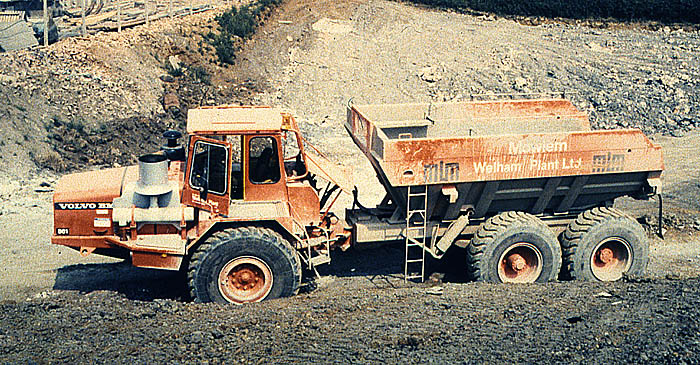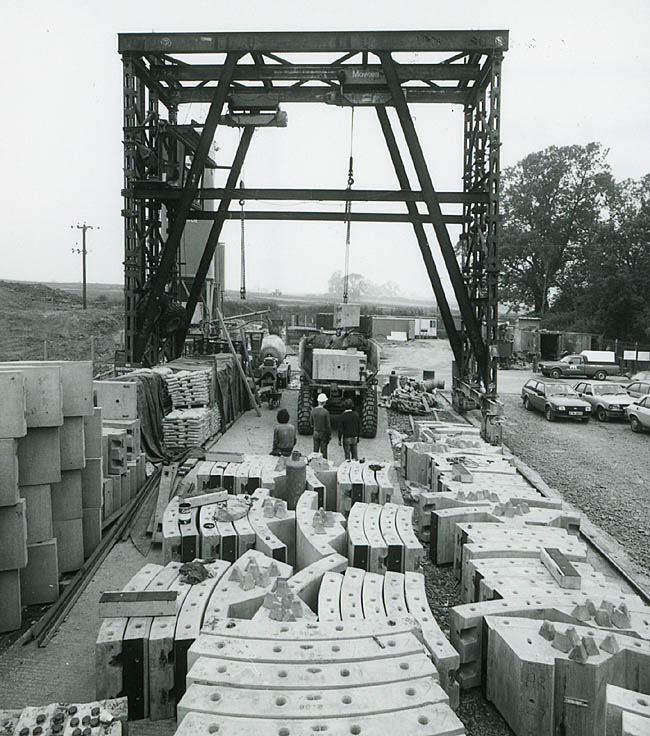|
Tunnel Repairs Logistics
Mowlem looked at several options for transporting materials to and from the face before deciding on a pair of new Volvo 861 articulated dumpers. These coped easily with the steep ramp from the north portal up to the site yard and tip area, and were well matched to the machine cycle below. Each ring of lining required two loads of material in and two of spoil out. No passing bay was needed and all personnel had to sit in the back of the trucks for safety. Walking to work was strictly forbidden as drivers simply backed down the dark 5m wide tunnel. And as the reline progressed timing of their lengthening journey became critical to progress. The ride became exhilarating. Machine excavation had started June 1983 as the Grosvenor shield kicked off from a hand enlarged chamber. Progress accelerated with double ten hour shifts, then hit the ten rings a shift target which had been planned and made Mowlem agent John Woods 'happy that we got the system right'. Segment supply had to keep pace with special units needed to drain the network of old construction headings running at the foot of the sandstone beside the tunnel. Some had been expected from the survey. Others were uncovered as the lining was broken out and this gave just four hours warning from discovery to ring building. Segment packs had to be quickly reshuffled up at the surface to match. "The yard gang get ten out of ten for that", commented contracts manager Roy Slocombe.
The only regrets on site, by both client and contractor, are that the smoothly running machines could not have been allowed to keep going to the south end of the bore. As it is the shield is now being stripped out to leave its skin in the ground. Local repairs and pointing will have to suffice for the comparatively sound remainder of the tunnel where British Waterways has to revert to its more familiar style of subsistence maintenance.
|

